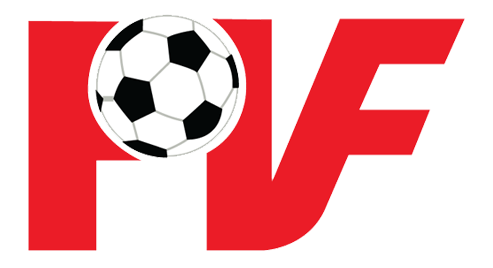|
What should be the effective method of physical training for young children? PVF Sports Science Specialist Lê Cao Cường takes an insider look into the matter.
From the previous article, we have known that:
– Children receiving scientific physical training method from adolescent will EXCEED their potential when they reach adulthood.
– Children receiving scientific physical training method from pre-adolescent will FAR EXCEED their potential when they reach adulthood.
(Based on research published on ASCM Health & Fitness Journal, United States, 2014)
So what is the effective method of physical training for young children?
Integrative Neuromuscular Training model (INT)
The Integrative Neuromuscular Training model (or INT) is one of the most effective physical training models applied worldwide. In this model, physical activities range from general (including fundamental motor skills – picture 2) to sport-specific activities. Exercises within the INT model include:
• Resistance training
• Dynamic stability exercises
• Core focused exercises
• Plyometric and agility
Exercises in the INT model are designed for development of health and physique for each individual.

The Integrative Neuromuscular Training model (INT) must be designed to improve health as well as physical abilities to prepare a solid foundation for the development of the youngsters until adulthood.
Why “integrative”? How is it different from normal training method?
Normal physical training tends to focus on the health factor, with an aim to improve body shape, body composition, cardiovascular, and so on. Whereas in the INT model, the training program integrates additional physical capacities, including agility, coordination, dynamic stability, speed, reaction or power.
By integrating both well-being and athletic capacity, young children will be provided with a solid foundation for their comprehensive development. In addition to being healthy and in shape, they possess the potential of playing sports professionally in adulthood.
Benefits of INT model
The INT model is established to help adolescents enhance their fundamental motor skills, develop coordination of complex movements, and improve the confidence when participating in physical activities. These factors contribute to the two primary targets:
1. Optimizing the training age of young children until they reach adulthood.
Children who participate in no physical training activities before reaching 18 have training age of zero. Whereas, children who begin the INT model at 8 years old will already acquire 10 years of training age when they reach 18. The benefit is two-fold: not only the children are provided with the foundation of movement and strength, they are also more ready to begin structured strength and conditioning training, learn the technique more easily and develop quicker when reaching adulthood.
2. Optimizing the potential of neuromuscular development when reaching adulthood
Researches have shown that children with inactive life and no physical training cannot achieve their maximum potential or even develop slower, as their neuromuscular is not utilized. The puberty period is one of the fastest developing period of the human body. Therefore, positive adaptation will present boarder effects. With scientific training method, children will be provided with adequate stimulus to help optimize the development of their body.
Seven fundamental movements of an INT training curriculum

All training program based on INT model must aim to develop these seven fundamental movements.
Sample training program based on INT model
PVF physical training program aims to stimulate the concept and philosophy of INT model. PVF Academy players begin physical training at the age of 11 with exercises including refining the movements and working with light weights.
A. For young children with no training experience before or during puberty (training age of 0), the program focuses on developing the fundamental movements.
These seven movements are the fundamental of physical training. Most of the exercises or form of physical training revolve around these movements. Youngsters should be instructed to perform the movements slowly and with accurate technique. In this getting started period, no weights or light weights should be used.
The program focuses on whole body development, and should be carried out 3 days per week (with rest days in between):

A sample INT training program
B. For young children with previous training experience before or during puberty (training age of 8+) with adequate foundation of movement and technique, more complex movements with higher load and volume should be integrated into the training program (e.g. use of heavy weight). As this period of development is considered as more “serious” and more “risky”, precaution measures should be taken into consideration.
Training focus are also separated to upper body and lower body, with 4 scheduled training days per week (e.g. upper body, lower body, rest, upper body, lower body).

A sample lower body training program

A sample upper body training program
Summary
• Young children should participate in INT physical training model before or during puberty, or at least participate in a sporting activity to ensure positive development. Inactive lifestyle should be avoided.
• The INT model integrates both health and athletic skills. Young children will not only be in shape, but also receive fundamental motor skills and optimal muscle strength to participate or compete in sporting activities at the highest level.
• Children (before 18 years old) with no training experience should begin a training program with focus on fundamental movements and perfect execution technique.
• Children with previous training experience, possessing adequate movement and technique can begin advanced and more complex training program for optimal physical development. With higher complexity, the associated risks will also increase, which requires proper coaching activity.
Reference: Myer, G. D., Lloyd, R. S., Brent, J. L., & Faigenbaum, A. D. (2013). How Young is “Too Young” to Start Training? ACSM’s Health & Fitness Journal, 17(5), 14–23. http://doi.org/10.1249/FIT.0b013e3182a06c59
- Lê Cao Cường/PVF

